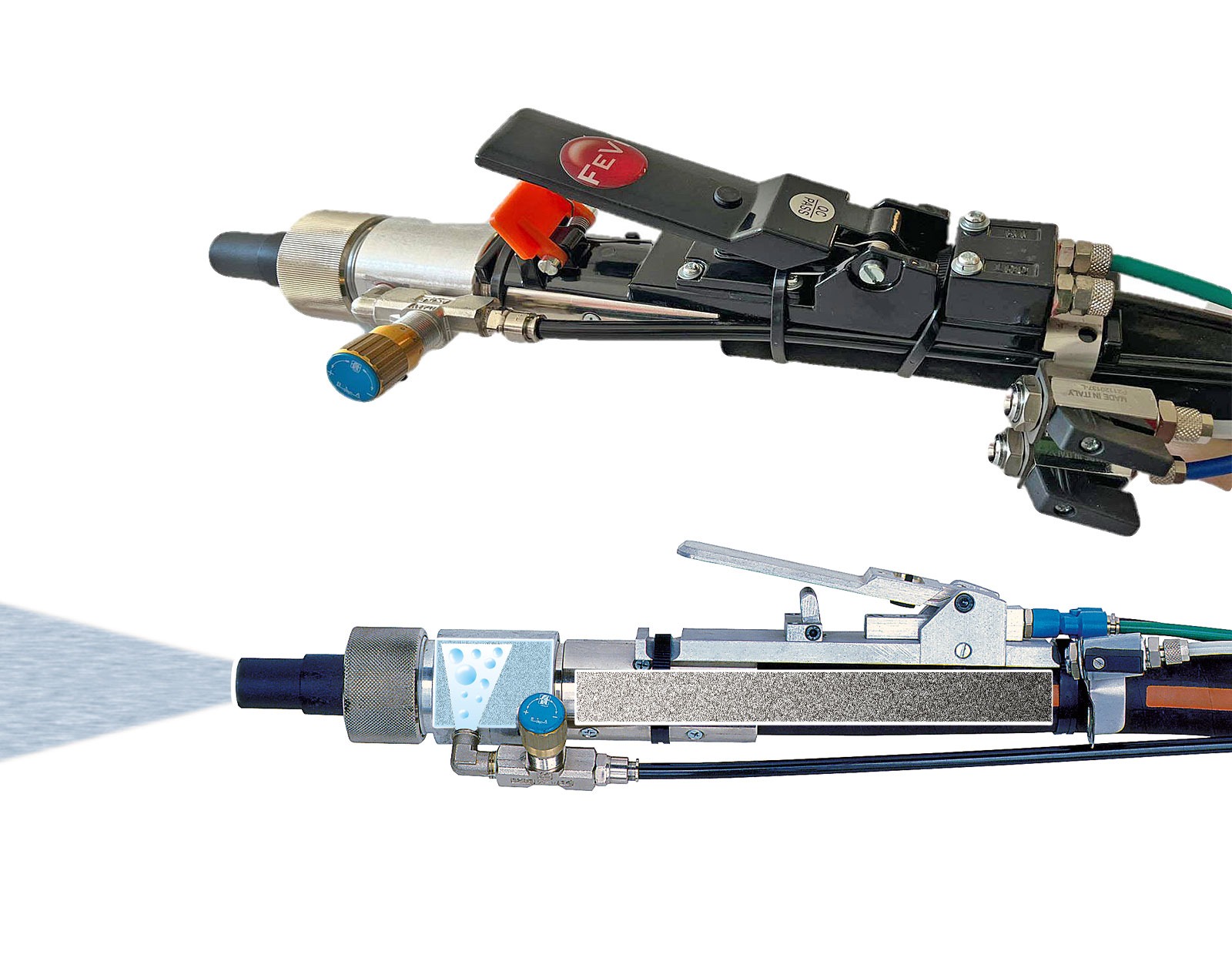The difference between Hydrosandblasting and Air-hydro Sandblasting
Reading time : 3 minute and 45 seconds
In this article we will talk about the differences between a common Hydrosandblaster and Air-hydro sandblaster
Hydrosandblasting
As a base of hydro-sandblasting a pressure washer is used where, at the outlet of the water jet, a Venturi system is mounted which sucks the abrasive from a container. Basically, the air (transport vehicle of the abrasive in dry sandblasting) is replaced by water. This system achieves the elimination of dust, significantly penalising the following:
- yield per unit of time
- operation (the hose that sucks the sand cannot be longer than 4-5 metres and therefore it is necessary to continuously bring abrasive in the vicinity of the workplace)
- use of large quantities of water that drips copiously or accumulates on the treated surface.
The only advantage of the hydro sandblaster is the possibility to carry out the work without the need for compressed air.
In summary
- Hydrosheeting is a process based on a mixture of 90 % water and 10 % sand.
- The extraction of the sand is done by the "Venturi" principle.
- The resulting jet is characterized by the constant output of water and the discontinuous presence in the mixture of sand ;
- Therefore, hydro-sandblasting is certainly a practical and versatile process, but without a doubt suitable for semi-professional use
Aero hydro-sandblasting is the most recent and innovative technology; we can see its operating principle in detail in the illustration in the water sandblasting machine catalogue.
This system uses as a base a free jet sandblaster where water is injected into a chamber placed before the sandblasting nozzle. In this way, a homogeneous mixture composed of air-water-abrasive is obtained.
The water supply is independent of the mains pressure, thus always guaranteeing the necessary flow rate which is controlled by the starting and stopping system of the sandblaster.
In summary
The abrasive humidification benefits in free spray sandblasting are 5 at least:
- Dust collecting
By humidifying sand before spraying, one can halt dustiness produced by blast of air and stop whipped up dust produced by treatment of surfaces
- Higher safety for operators
Humidification allows to carry out sandblasting operations, avoiding contact with whipped up dust or harmful substances, protecting the operator and those who are in the workplace.
- Water waste reduction
Water Blast does not flood the area of intervention. It uses 2 litres per minute of water, only compared to 80 litres of a common hydro cleaning machine!
- A greater impact force on surfaces
The humidified granules of sand sprayed by the gun increase their own specific weight, producing a greater impact force and a higher removal performance.
- A reduction in management costs
Humidification consumes less air, less water, less abrasive...but most of all it allows to use low cost dusty sands which remarkably reduce management costs.
Conclusion
In summary, we looked at the differences between hydro blasting and Air hydro sandblasting. Both processes have advantages and disadvantages, but it is crucial to consider the specific needs of the job before deciding which method to use. Hydro-sandblasting allows working without the use of compressed air, however it has some limitations in terms of yield and operation. On the other hand, Air hydro sandblasting offers numerous benefits such as dust reduction, increased operator safety and less water waste. Moreover, it allows to obtain a greater effectiveness in the impact on the treated surface and a reduction in operating costs.









